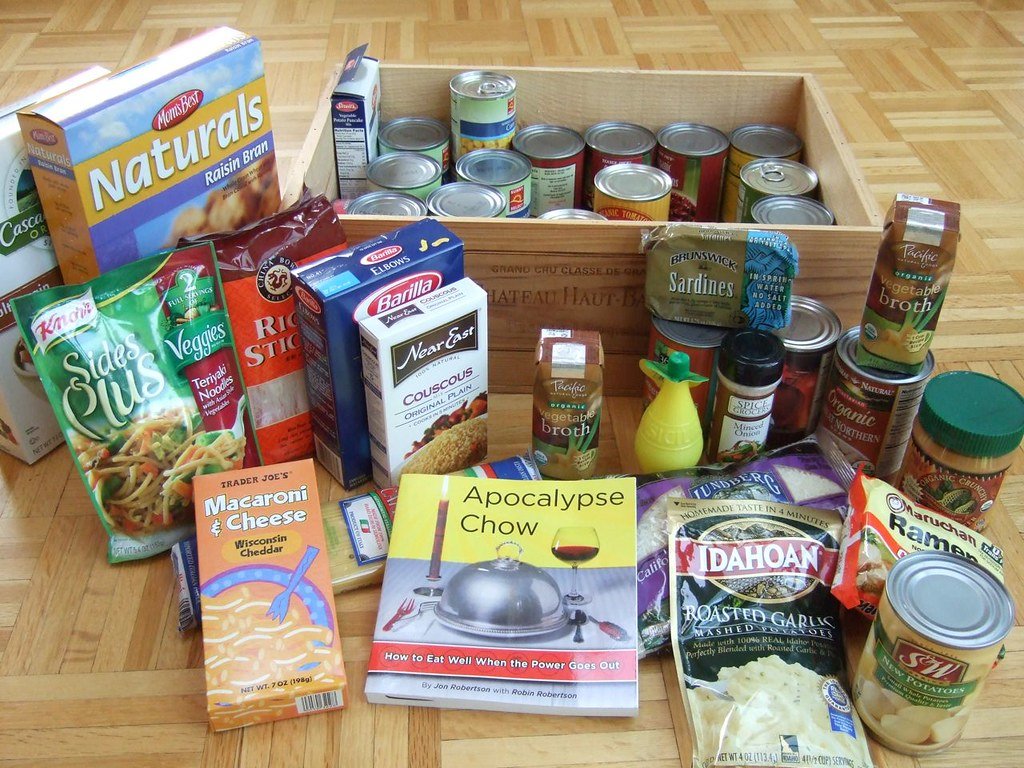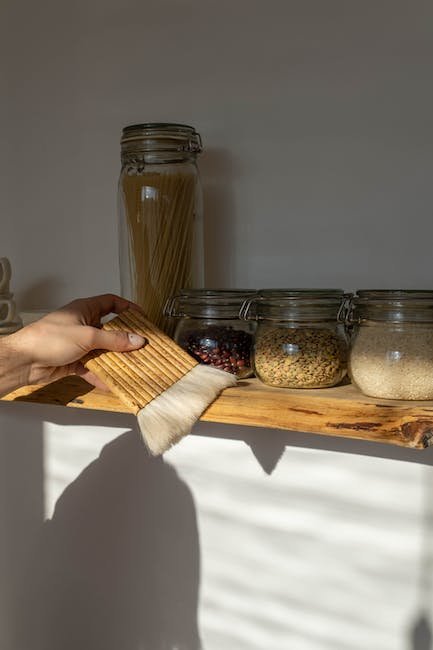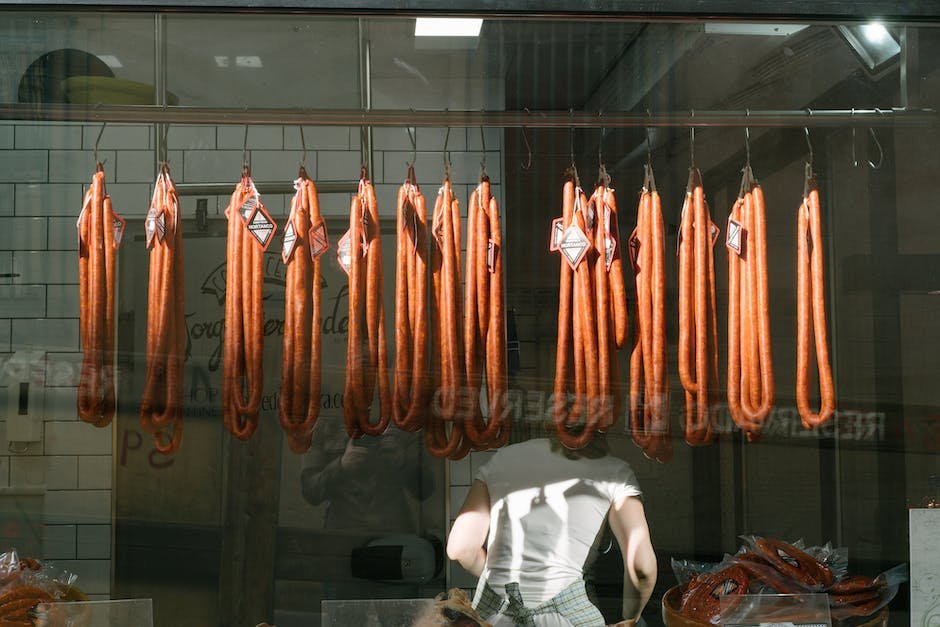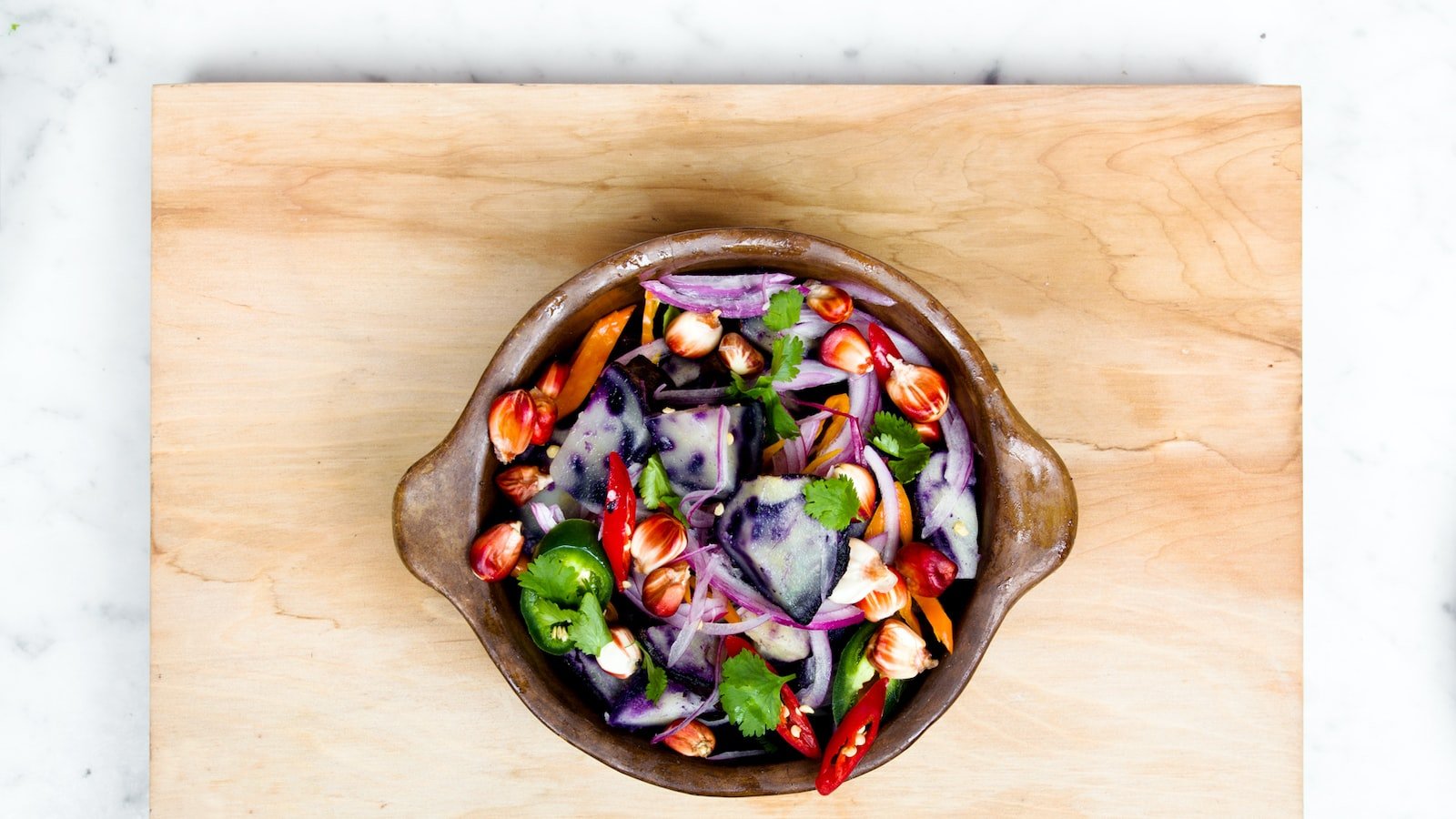Now Reading: The Ultimate Guide to Long-Term Food Storage
-
01
The Ultimate Guide to Long-Term Food Storage

The Ultimate Guide to Long-Term Food Storage
Picture this: the world outside may be chaotic, unpredictable, and unfathomable, but within the safety of your own four walls, you have peace of mind. A sense of security that stems from knowing you are prepared for anything that may come your way – including the possibility of long-term food shortages. Building an arsenal of nourishment that will last you through turbulent times is not just practical, it’s empowering. So, whether you’re a seasoned prepper or simply looking to be self-reliant against uncertain events, gather around as we unveil “The Ultimate Guide to Long-Term Food Storage.” Within these pages, you’ll discover knowledge that will transform your pantry into a fortress of sustenance, equipping you to weather any storm that threatens to leave you hungering for more.
Table of Contents
- Food Storage Containers: Choosing the Right Options for Long-Term Preservation
- Preserving Nutritional Value: Best Practices for Long-Term Food Storage
- Essential Items for a Well-Stocked Pantry: Building a Comprehensive Food Storage Plan
- Expert Tips for Maximizing Shelf Life: Proven Methods to Extend the Longevity of Stored Food
- Preparing for Emergencies: Long-Term Food Storage Strategies to Ensure Survival
- Q&A
- Final Thoughts

Food Storage Containers: Choosing the Right Options for Long-Term Preservation
Choosing the Right Options for Long-Term Preservation
When it comes to storing food for the long haul, choosing the right containers can make a world of difference. Not only should they keep your food fresh and safe from spoilage, but they should also be durable and convenient. Here are some factors to consider when selecting food storage containers for long-term preservation:
- Material: Opt for containers made from high-quality, food-grade materials such as glass or BPA-free plastics. These materials are non-toxic and ensure the integrity of your stored food.
- Airtight Seal: Look for containers with tight-fitting lids that create an airtight seal. This helps to prevent air and moisture from entering, keeping your food fresher for longer.
- Size and Capacity: Consider your storage needs and choose containers that can accommodate the amount of food you plan to store. Different sizes and capacities will allow for easy organization and portioning.
- Stackable and Space-Saving: Optimize your storage space by selecting containers that are stackable. This feature not only saves space but makes it easier to access and manage your food stash.
- Transparent and Label-Friendly: To avoid confusion, select containers that are transparent or semi-transparent, allowing you to quickly identify the contents. Additionally, containers with smooth surfaces provide a convenient space for labeling.
By considering these factors and choosing the right food storage containers, you can ensure that your long-term preserved food stays fresh, organized, and easily accessible.

Preserving Nutritional Value: Best Practices for Long-Term Food Storage
When it comes to long-term food storage, maintaining the nutritional value of your stockpile is vital. While many foods can last for extended periods, their nutrient content might deteriorate over time. Here are some best practices to ensure that your stored food remains packed with essential vitamins and minerals:
- Choose nutrient-dense foods: Opt for foods that are naturally rich in nutrients, such as beans, nuts, whole grains, and dehydrated fruits and vegetables. These items not only have a longer shelf life but also retain their nutritional value for an extended period.
- Practice proper packaging: To protect your stored food from degradation, use airtight containers or sealed Mylar bags with oxygen absorbers. This helps prevent the growth of bacteria, mold, and insects that can compromise the nutritional quality.
- Rotate your stock: Regularly check the expiry dates of your stored food and consume items that are nearing expiration, replacing them with fresh supplies. By rotating your stock, you ensure that you have access to the freshest and most nutritious options.
- Store in a cool, dark, and dry location: Heat, light, and humidity can degrade the nutritional value of food. Keep your long-term storage in a dry, cool, and dark place, such as a basement or pantry, to maintain optimal conditions for preserving nutrients.
By following these best practices, you can be confident that your long-term food storage not only provides sustenance but also supports your nutritional needs during challenging times.
Essential Items for a Well-Stocked Pantry: Building a Comprehensive Food Storage Plan
When it comes to preparing for the unexpected, having a well-stocked pantry is essential. A comprehensive food storage plan can provide peace of mind during uncertain times. Here are some key items to consider for your pantry:
- Canned Goods: Stock up on a variety of canned goods such as soups, vegetables, fruits, and proteins like tuna or chicken. These provide a long shelf life and can serve as the foundation for many meals.
- Grains and Pasta: Rice, quinoa, pasta, and other grains are versatile staples that can be used as a base for countless recipes. They provide energy, are easy to store, and have a long shelf life.
- Beans and Legumes: Dried beans, lentils, and chickpeas are excellent sources of protein and fiber. They can be stored for a long time and offer endless options for creating hearty and nutritious meals.
- Spices and Seasonings: A well-stocked pantry should include a variety of spices and seasonings to add flavor to your meals. From salt and pepper to herbs and spices, these small additions can make a big difference in enhancing your dishes.
- Flour and Baking Supplies: Flour, yeast, baking powder, and baking soda are essential for creating delicious homemade bread, cakes, and cookies. Having these items on hand allows you to whip up baked treats whenever the mood strikes.
- Condiments and Sauces: Don’t forget to include a selection of condiments and sauces such as ketchup, mayonnaise, mustard, soy sauce, and hot sauce. These will add depth of flavor to your meals and can help liven up even the simplest dishes.
Building a well-stocked pantry takes time and planning, but the benefits are invaluable. With these essential items, you’ll be prepared to create delicious and nutritious meals even in uncertain times.
Expert Tips for Maximizing Shelf Life: Proven Methods to Extend the Longevity of Stored Food
Expert Tips for Maximizing Shelf Life
When it comes to storing food for the long term, there are several proven methods that can significantly extend its longevity. Whether you are a seasoned prepper or simply want to make your groceries last longer, these expert tips will help you get the most out of your stored food.
- Proper packaging: The way you package your food plays a crucial role in its shelf life. Consider using airtight containers or vacuum-sealed bags to prevent exposure to moisture and air. This will help preserve the quality and taste of the food for an extended period.
- Temperature control: Temperature fluctuations can deteriorate the quality of stored food. Keep your pantry or storage area cool and dry to maintain optimal conditions. Avoid placing food items near heat sources or in direct sunlight, as this can speed up spoilage.
- Rotation system: Implementing a rotation system ensures that older items are used first, preventing them from going bad. Label your stored food with clear expiration dates and organize them accordingly, so you always know what needs to be consumed next.
- Proper cleaning and handling: Before storing any food, make sure your containers or storage areas are clean and free from any contaminants. Additionally, always handle stored food with clean hands and appropriate utensils to avoid introducing bacteria that can cause spoilage.
By following these expert tips, you can maximize the shelf life of your stored food and have peace of mind that your supplies are ready and safe for consumption when you need them most. Remember, a little extra effort in proper storage techniques can go a long way in ensuring the longevity and quality of your stored food.
Preparing for Emergencies: Long-Term Food Storage Strategies to Ensure Survival
In times of emergencies or unforeseen circumstances, having a well-planned food storage strategy becomes vital for ensuring the survival of yourself and your loved ones. With potential disruptions to regular food supply chains, taking proactive steps towards long-term food storage not only provides peace of mind but also safeguards against uncertainties.
1. Assess Your Needs: Start by evaluating the dietary requirements of your household members. Consider factors like age, allergies, and potential health conditions when planning for long-term food storage. This way, you can ensure that your storage is tailored to meet specific needs.
2. Allocate Storage Space: Find a dedicated area in your home where you can store your emergency food supplies. Choose a cool, dry, and well-ventilated location that is away from direct sunlight or extreme temperatures. Shelving units, cabinets, or closets are excellent options for organizing your long-term food storage.
3. Stock Up on Essentials: Prioritize stockpiling non-perishable, nutrient-rich items that have a long shelf life. Items such as canned goods, dried fruits, dehydrated meals, rice, pasta, and nuts are excellent choices. Don’t forget to include essential spices, condiments, and cooking oils to enhance the flavor and variety of your stored meals.
4. Rotate and Monitor: Regularly inspect your long-term food storage to ensure items remain in good condition and within their expiration dates. Implement a system where you rotate older items to the front and use them in your everyday meals, while replenishing your storage with fresh items. Monitor your stock regularly to prevent spoilage or depletion.
By implementing these long-term food storage strategies, you can ensure that you and your loved ones are prepared for any emergency situation that may arise. Remember, being proactive is key to ensuring survival and providing a sense of security during challenging times.
Q&A
What are the key factors to consider when storing food for the long term?
To ensure long-term food storage, key factors include maintaining a cool and dry environment, using proper packaging materials, rotating your food stock regularly, and carefully choosing foods with longer shelf lives.
What type of containers are best for long-term food storage?
For long-term food storage, containers that are airtight and made of food-grade materials like glass or high-quality plastic are ideal. These containers will help prevent moisture, pests, and oxygen from compromising the food’s shelf life.
What are some recommended food items for long-term storage?
Some recommended food items for long-term storage include grains (such as rice and oats), dried legumes, dehydrated fruits and vegetables, powdered milk, canned goods, and freeze-dried foods. These items typically have extended shelf lives and provide essential nutrients.
How do you ensure the longevity of stored food?
To ensure longevity, it is important to store food at a consistent temperature of around 70 degrees Fahrenheit or below. Additionally, protect your food from sunlight, humidity, and pests. Regularly checking the expiration dates and rotating your stock will further guarantee the quality of stored food.
Are there any foods that should not be stored for the long term?
Some foods are not suitable for long-term storage due to their shorter shelf lives or quality deterioration. These include fresh produce, dairy products, items with high oil content, and complex dishes like casseroles or soups. It is best to focus on foods specifically designed for long-term storage.
How long can you expect food to last in long-term storage?
The shelf life of food in long-term storage depends on factors like storage conditions and packaging. Generally, properly stored dried goods and canned foods can last anywhere from 1 to 30 years. However, it’s important to regularly check the quality and rotate your stock to maintain the best taste and nutritional value.
Is it necessary to label and track the food in long-term storage?
Labeling and tracking the food in long-term storage is highly recommended. By clearly labeling containers with the contents and storage date, you can easily keep track of what needs to be consumed first. This also helps with rotation and minimizes wastage of food.
What are some tips for maximizing the space when storing food long term?
Maximize your storage space by using stackable containers, vacuum-sealed bags, or mylar bags with oxygen absorbers that help compress the food for efficient storage. Additionally, utilizing unused spaces like under beds or in closets can help optimize your long-term food storage area.
Final Thoughts
In this adventure through the depths of food preservation, we have journeyed far and wide to uncover the secrets of long-term storage. From ancient civilizations to modern pantries, the art of preserving sustenance has evolved and adapted, offering a lifeline in times of scarcity or uncertainty. We have explored the realms of canning, dehydrating, pickling, and freezing, unearthing the tried-and-true techniques that stand the test of time.
As we bid farewell to this comprehensive guide, let us reflect on the invaluable wisdom it has imparted upon us. We have learned that knowledge is key, as understanding the principles behind long-term food storage empowers us to overcome adversity and embrace self-sufficiency. Through meticulous planning and careful consideration, we can pave a path towards a future brimming with peace of mind and a well-stocked pantry.
Yet, amidst the practicality, we must not forget the magic of long-term food storage. For within each jar of preserved fruits, every bag of dehydrated vegetables, and every perfectly packaged meal, there lies the essence of anticipation – a promise of nourishment, resilience, and comfort. These provisions whisper tales of hope and ingenuity, reminding us of our shared history and the triumph of human perseverance.
Now armed with the ultimate guide to long-term food storage, we are equipped with the knowledge to ensure that our larders remain well-stocked in the face of any storm. And beyond the practicalities, let us savor the beauty of this age-old practice. Let us bask in the satisfaction of cultivating our own sustenance, preserving the flavors and memories, and embracing the art of nourishing both body and soul.
As we conclude this journey, I invite you to take these newfound insights and embark on your own personal quest for food security. Whether you decide to grow your own, seek out local producers, or master the art of preservation yourself, let this guide be your compass. May it guide you through the uncharted territory of long-term food storage, offering you the fortitude to navigate any challenge that may come your way.
Now, with hearts brimming with knowledge and bellies filled with inspiration, let us step into the future, embracing a world where resilience and sustainability reign supreme. Farewell, fellow journeyers, may your pantries be abundant and your recipes herald a new era of self-sufficiency.
As an affiliate, my content may feature links to products I personally use and recommend. By taking action, like subscribing or making a purchase, you’ll be supporting my work and fueling my taco cravings at the same time. Win-win, right?
Want to read more? Check out our Affiliate Disclosure page.





